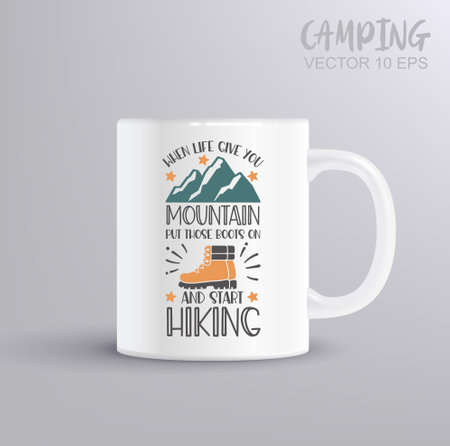Understanding Your Experience and Fitness Level
Before you start mapping out your multi-day backpacking trip, it’s important to honestly assess your experience and fitness level. Picking a trail that matches your background helps ensure your adventure is both fun and safe. Whether you’re new to backpacking or have logged hundreds of miles, this step sets the stage for a successful journey.
Evaluate Your Hiking Background
Think about the types of hikes you’ve done before. Have you only tackled short local trails, or do you have experience with longer, more remote routes? Understanding your comfort with different terrain—such as rocky paths, steep climbs, or river crossings—can help narrow down suitable options.
| Experience Level | Suggested Trail Type | Average Daily Mileage |
|---|---|---|
| Beginner | Well-marked, established trails; moderate elevation gain | 5-8 miles |
| Intermediate | Mixed terrain; some off-trail navigation; higher elevation gain | 8-12 miles |
| Advanced | Remote, rugged trails; significant elevation change; possible technical sections | 12+ miles |
Assess Your Physical Fitness
Your fitness level plays a huge role in your enjoyment and safety on the trail. Multi-day hikes can be demanding, especially when carrying a loaded pack. Consider how comfortable you are with long days on your feet and how quickly you recover from physical activity.
Fitness Checklist:
- Can you comfortably walk or hike for several hours at a time?
- Are you used to carrying weight (20-40 lbs) over varied terrain?
- Do you have any injuries or health concerns to consider?
- Are you acclimated to the elevation if hiking at higher altitudes?
Skill Set Matters Too
Certain backpacking routes require specific skills beyond basic hiking—like navigating with a map and compass, crossing streams safely, or handling sudden weather changes. Make sure the route you choose aligns with what you’re confident doing on your own.
Tip: Don’t Overestimate Your Abilities
It’s always better to start with an easier trip and work up as your skills and endurance grow. This approach makes backpacking enjoyable and reduces the risk of accidents or burnout.
2. Seasonal Weather and Trail Conditions
When planning a multi-day backpacking trip in the United States, it’s crucial to factor in the seasonal weather and current trail conditions. Each region has its own unique climate patterns, and these can greatly impact both your safety and overall experience on the trail.
Why Weather Matters
Weather can change quickly in the backcountry, especially in mountainous areas or at higher elevations. Researching average temperatures, expected rainfall, and potential for storms helps you pack appropriate gear and clothing. For example, the Pacific Northwest is known for wet springs and falls, while the Southwest deserts are extremely hot in summer but chilly at night.
Snowpack and Trail Accessibility
In many parts of the U.S., snow lingers on trails well into late spring or even early summer. High elevation trails in places like the Sierra Nevada or Rockies might be impassable due to deep snow or swollen river crossings. Always check recent trail reports for snow levels, downed trees, or washouts before heading out.
Typical Seasonal Challenges by Region
| Region | Spring | Summer | Fall | Winter |
|---|---|---|---|---|
| Sierra Nevada | Heavy snowpack, icy trails | Melting snow, mosquitoes | Crisp days, fewer bugs | Deep snow, closed passes |
| Pacific Northwest | Muddy, rainy conditions | Mild temps, dry trails | Rain returns, slippery paths | Frequent storms, flooding risk |
| Rocky Mountains | Lingering snow, cold nights | Thunderstorms, wildfire risk | Cooler temps, golden aspens | Bitter cold, avalanche danger |
| Southwest Deserts | Pleasant temps, wildflowers | Extreme heat, flash floods | Mild weather returns | Cold nights, short days |
| Appalachian Trail | Mud season, blooming trees | Humid, thunderstorms likely | Crisp air, leaf color changes | Icy patches, shorter daylight hours |
How to Check Current Conditions
The best way to stay informed is by checking official websites like National Park Service (NPS), U.S. Forest Service (USFS), or local ranger stations for up-to-date trail reports. You can also use hiking apps or forums where recent hikers share their experiences. Pay attention to warnings about washed-out bridges, wildlife activity, or temporary closures.
Packing for Changing Weather
No matter the forecast, always bring layers—including a waterproof jacket—and be ready for sudden shifts. Quick-drying clothes and sturdy footwear are essential if you expect rain or stream crossings.
Selecting the Right Season for Your Hike
Your ideal hiking season depends on your tolerance for crowds, bugs, heat, and cold. Popular routes often see more hikers in peak summer months but may offer better weather. Shoulder seasons (late spring or early fall) can give you solitude but come with their own risks like unpredictable storms or lingering snow.
Key Takeaways for Trip Planning:
- Research local weather patterns before picking your route.
- Check current trail conditions for accessibility and hazards.
- Select gear based on likely weather scenarios during your hike.
- Avoid high-risk seasons such as peak fire season or heavy snowmelt unless prepared.
- If uncertain about conditions, contact park rangers—theyre happy to help!
Selecting your backpacking route with seasonal weather and trail conditions in mind ensures a safer and more enjoyable adventure on America’s incredible trails.

3. Distance, Elevation, and Terrain
Picking the right backpacking route starts with understanding your limits and what you want out of your adventure. Three key things to look at are daily mileage, total elevation gain, and the type of terrain you’ll cover. Let’s break down how each of these factors can shape your trip:
Assess Daily Mileage
How far do you want to hike each day? For most people, 8-12 miles per day is a comfortable range on established trails with moderate terrain. If you’re new to backpacking or hiking in rugged areas, it’s smart to start with shorter distances. Remember, carrying a loaded pack will slow you down compared to day hiking.
Average Backpacking Distances
| Experience Level | Recommended Daily Mileage |
|---|---|
| Beginner | 5-8 miles |
| Intermediate | 8-12 miles |
| Advanced | 12-18+ miles |
Total Elevation Gain
Elevation gain is just as important as distance. Climbing 2,000 feet in five miles is way tougher than walking a flat ten-mile stretch. Check trail guides or apps for info about how much uphill (and downhill) you’ll face each day. Make sure it matches your fitness level—big elevation gains mean slower progress and more energy burned.
Typical Elevation Challenges
| Route Type | Total Elevation Gain (per day) |
|---|---|
| Easy/Flat Trails | < 500 ft |
| Moderate Trails | 500-2,000 ft |
| Challenging/Mountainous Trails | > 2,000 ft |
Terrain Difficulty
The ground under your boots matters! Trails in the U.S. can range from smooth dirt paths in national parks to rocky scrambles in the Rockies or Sierra Nevada. Some may cross streams or require navigation through dense forest. Before choosing a route, read recent trail reports or check online forums for current conditions.
Common Terrain Types and Their Impact
| Terrain Type | Description |
|---|---|
| Smooth Trail | Easier walking; faster pace possible |
| Rocky/Rugged Trail | Slower pace; watch footing; more tiring |
| Muddy/Wet Areas | Pace slows; risk of slips; waterproof boots help |
By taking time to assess daily mileage, total elevation gain, and terrain difficulty, you can pick a backpacking route that fits your abilities and gives you the kind of challenge—and fun—you’re looking for.
4. Permits, Regulations, and Leave No Trace Principles
Why Permits Matter for Backpackers
When planning a multi-day hike in the U.S., securing the right permits is often required. Many popular trails—like those in national parks or wilderness areas—use permit systems to limit crowding and protect the environment. Before heading out, check if your route needs a permit, when you should apply, and how much it costs.
| Popular Area | Permit Requirement | Where to Apply |
|---|---|---|
| Yosemite National Park | Wilderness Permit Required | NPS Yosemite Website |
| PCT (Pacific Crest Trail) | Long-Distance Permit for 500+ miles | PCTA Website |
| Smoky Mountains National Park | Backcountry Permit Required | Parks Official Site |
| Grand Canyon Backcountry | Backcountry Permit Required | NPS Grand Canyon Site |
Understanding Camping Regulations on the Trail
Every trail and public land has its own set of rules about where you can camp, build fires, or even bring pets. For example, some areas only allow camping at designated sites, while others offer dispersed camping with restrictions. Always review regulations before your trip to avoid fines or being asked to move your camp.
Key Camping Regulations to Check:
- Campsite location: Are there designated sites? How far from water sources must you camp?
- Campfire rules: Are fires allowed? Do you need a fire permit or must you use a stove?
- Group size limits: Is there a maximum group size for overnight stays?
- Bear canisters: Are they required for food storage?
- No-trace requirements: Must you pack out all trash or human waste?
The Importance of Leave No Trace Principles
The Leave No Trace (LNT) principles are the gold standard for ethical backcountry travel in America. Following LNT ensures that wild places stay beautiful and healthy for everyone. The seven LNT principles cover everything from planning ahead to disposing of waste properly.
The Seven Leave No Trace Principles:
- Plan ahead and prepare.
- Travel and camp on durable surfaces.
- Dispose of waste properly.
- Leave what you find.
- Minimize campfire impact.
- Respect wildlife.
- Be considerate of other visitors.
Tying It All Together: Responsible Adventure Starts with Knowledge
If youre new to backpacking or hiking in U.S. wilderness areas, take time to research each destination’s permit process, local regulations, and best practices for outdoor ethics. Not only will this help keep your trip legal and safe—it also helps preserve Americas wild places for generations to come.
5. Accessibility, Logistics, and Resupply Options
When planning a multi-day backpacking trip in the United States, it’s essential to think beyond just the scenery and distance. Getting to and from the trailhead, managing logistics along the route, knowing your resupply points, and having a solid emergency exit plan are all key factors that can make or break your adventure.
Getting to and from the Trailhead
Trailhead accessibility is often overlooked but crucial. Some trailheads are located in remote areas with limited parking or require a long drive on rough forest roads. Consider whether you’ll need to arrange a shuttle, use public transportation (like Amtrak for some national parks), or park your own vehicle. Also, check if permits are needed for parking or overnight stays at the trailhead.
Common Transportation Options
| Option | Details |
|---|---|
| Personal Vehicle | Most flexible; check road conditions and parking regulations |
| Shuttle Service | Popular for point-to-point hikes; book in advance |
| Public Transit | Limited availability; great for some major parks and trails |
| Ride Share/Taxi | Useful for last-mile connections near towns or cities |
Trail Logistics: Route Planning and Navigation
Mapping out your daily mileage, camping spots, water sources, and elevation changes helps you stay on track and avoid surprises. In popular U.S. backcountry areas like the John Muir Trail or Appalachian Trail, campsites might need reservations or permits—always check local regulations before heading out.
Key Logistics to Plan For:
- Campsite locations (and permit requirements)
- Daily mileage goals based on terrain and fitness level
- Water source availability and reliability
- Trail junctions or alternate routes for flexibility
Resupply Points Along the Trail
If your hike is longer than what you can carry in food and supplies, identify potential resupply points—these could be small towns, ranger stations, or established cache locations. In the U.S., many long-distance hikers mail themselves resupply boxes to post offices along trails like the Pacific Crest Trail (PCT) or Continental Divide Trail (CDT).
Typical Resupply Methods:
| Method | Description |
|---|---|
| Towns & Stores | Buy supplies locally; good for supporting small communities |
| Mail Drops | Send packages to post offices or hostels ahead of time |
| Caches (pre-placed) | Stash supplies in bear-proof containers (where allowed) |
Emergency Exit Strategies
No matter how well you plan, things can go wrong—injuries, weather changes, or personal emergencies happen. Research potential exit points along your route where you could safely leave the trail if needed. Mark these on your map, and share your itinerary with a trusted contact at home.
Emergency Plan Checklist:
- Identify side trails leading to roads or ranger stations
- Cary a satellite communicator or personal locator beacon (PLB)
- Know cell service “hot spots” along the route (if any)
- Create check-in plans with family/friends at set intervals
By thinking through accessibility, logistics, resupply options, and emergency exits before you hit the trail, you’ll set yourself up for a safe and enjoyable backpacking experience anywhere in the U.S.

